Guide to Clean Air Zones
You might live in one, you've probably heard of them and if you haven't yet you will soon. Let's take a look at Clean Air Zones in the UK
As part of the Government’s long term strategy to improve air quality, clean air zones are being introduced across the country. By discouraging the use of older, more polluting, vehicles, clean air zones reduce the number of areas in the UK where air pollution breaches legal limits.
What is a clean air zone?
A clean air zone is an area where targeted action is being taken to improve the air quality. They also support the economic growth of that city or town. Clean air zones aim to address all sources of pollution, including nitrogen dioxide and particulate matter.
These zones can be confined to a single road or part of a city. If your vehicle exceeds the emission standards you may have to pay a fee to drive in a clean air zone.
Clean air zones aim to address all sources of pollution, including nitrogen dioxide and particulate matter. Local authorities are responsible for implementing clean air zones. Councils need to submit an action plan to the Government. Once this is approved, the local authority can receive funding to help implement a clean air zone.
Types of zones
At the moment, there are four different types of clean air zones in place:
Class A
Includes buses, coaches, taxis and private hire vehicles
Class B
Includes buses, coaches, taxis, private hire vehicles and heavy goods vehicles
Class C
Includes buses, coaches, taxis, private hire vehicles, heavy goods vehicles, vans and minibuses
Class D
Includes buses, coaches, taxis, private hire vehicles, heavy goods vehicles, vans, minibuses, cars. The local authority also has the option to include motorbikes
Minimum emission standard of vehicles
Every vehicle will have a minimum emission standard which you can find in your vehicle log book or from the manufacturer directly. In order to avoid paying a fee in a clean air zone, your vehicle must meet the following minimum standard.
For all vans and cars, including minibuses, taxis, and private hire, the following emissions standards must be met:
- Petrol
-
Euro 4
- Diesel
-
Euro 6
For motorbikes the minimum standard is Euro 3 and for larger vehicles, such as heavy goods vehicles, coaches and buses the standard is Euro VI.
Despite these categories, some local authorities can set their own emission standards for private hire vehicles and taxis. If you’re unsure whether your vehicle is compliant with a clean air zone, the best thing to do is contact the authority directly.
Cities with clean air zones in place
There are currently six clean air zones in place across England, these are:
Place |
Clean Air Zone Class |
|---|---|
Bath |
Class C |
Birmingham |
Class D |
Bradford |
Class C |
Bristol |
Class D |
Portsmouth |
Class D |
Sheffield |
Class C |
Tyneside |
Class D |
Greater Manchester |
(Under Review) |
Glasgow |
Low Emission Zone |
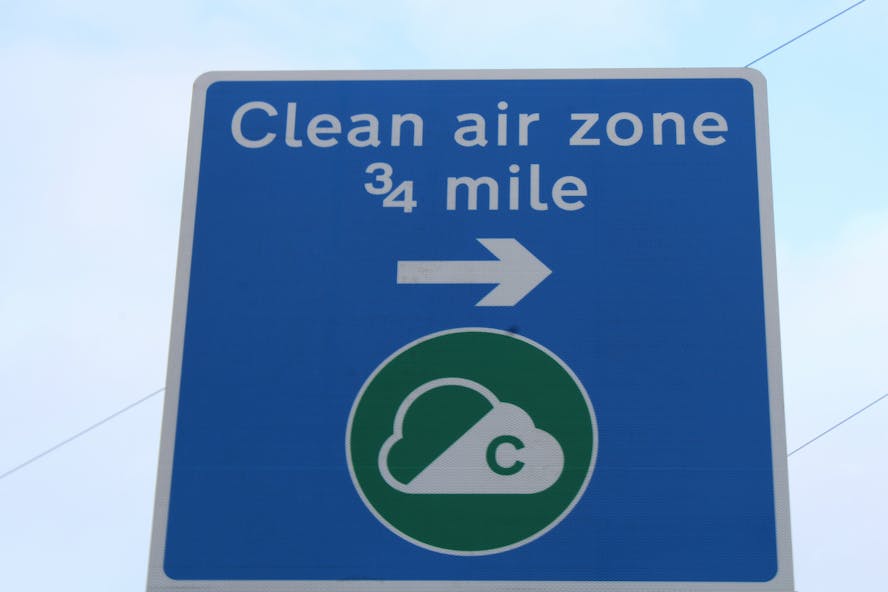
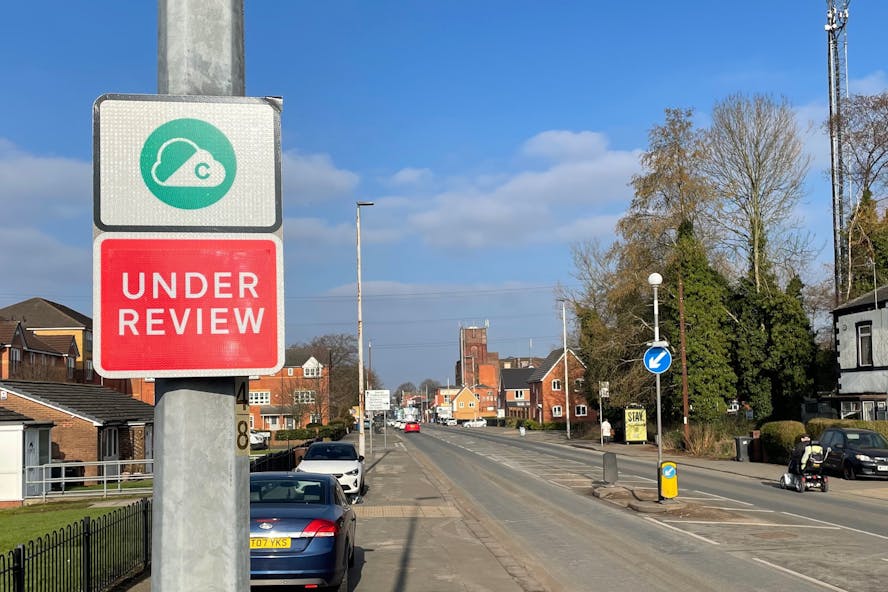
Do I need to pay to drive in a clean air zone?
The categories above should give you a rough idea of whether you’d need to pay to drive to a city that has a clean air zone in place. However, you can enter your reg number on the Government’s website for more information about charges in each zone. You can also pay any charges here.
Unlike the London Congestion Charge and Ultra-Low Emission Zone, clean air zones operate 24/7 every day of the year so it’s important to check before you travel. When you do receive a charge you will need to pay this by 11:59pm on the sixth day after your journey. If you do not pay the charges in time you could receive further fines.
The Glasgow Low Emission Zone came into force for all vehicles on 1 June 2023 and much like Clean Air Zones is in operation 24 hours a day, all year round. And just like Clean Air Zones there are numerous exemptions to cover essential service vehicles and when people's mobility is a factor.
Are there vehicle exemptions of clean air zones?
Each city has its own individual exceptions to these zones, but you are automatically nationally exempt if you have:
- A vehicle that has ultra-low emissions
- A disabled passenger tax class vehicle
- A disabled tax class vehicle
- A military vehicle
- A historic vehicle
- A vehicle retrofitted with technology accredited by the Clean Vehicle Retrofit Accreditation Scheme
- Certain types of agricultural vehicle
You can use the following links to find out if your vehicle is exempt from clean air zones in Bath, Birmingham, Bradford, Bristol, Greater Manchester, Portsmouth, Sheffield, Glasgow and Tyneside.
Clean Air Zone beating EVs
Nissan Townstar L2 90kW Acenta Van Auto 45kWh
- £1,486.49 Initial rental (ex. VAT)
- 24 Month term
- 5000 Annual mileage
- Subject to status and conditions + arrangement fee
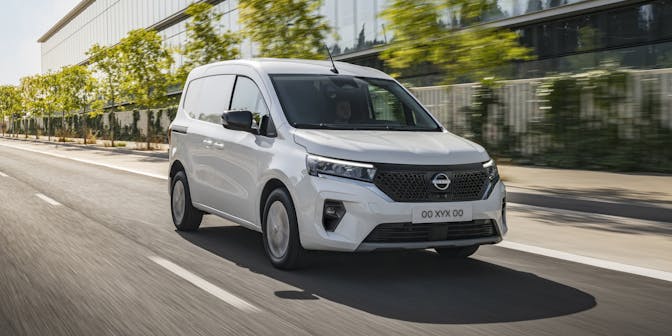
Renault Kangoo E-tech L2 LL21 90kW 44kWh Advance [Safety] Van Auto
- £2,089.29 Initial rental (ex. VAT)
- 48 Month term
- 5000 Annual mileage
- Subject to status and conditions + arrangement fee
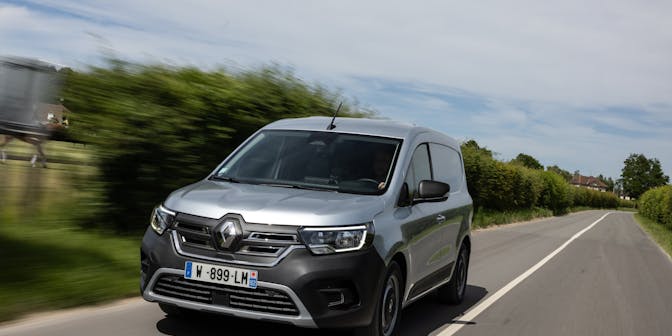
Vauxhall Vauxhall Combo Cargo Electric 100kW Prime Plus 52kWh H1 Van Auto
- £3,356.76 Initial rental (ex. VAT)
- 48 Month term
- 5000 Annual mileage
- Subject to status and conditions + arrangement fee
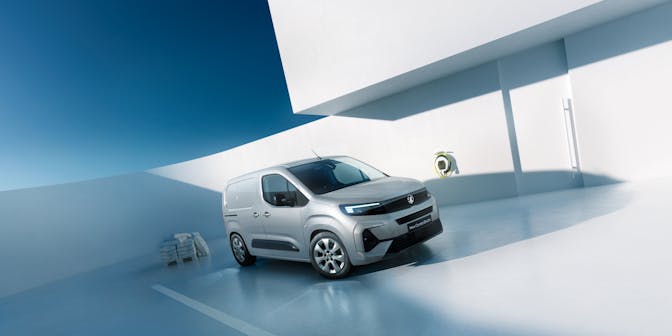
More EV guides
6 surprising things you didn’t know about electric vans

Understanding Vehicle Excise Duty (VED) or "Road Tax" for EVs
How to save money on a new car with Salary Sacrifice
